Chemical-recycling – High-density-polyethylene 26-05-2022 - Arhive
Chemical-recycling – High-density-polyethylene
-France setting the pace for PET chemical recycling in Europe
France is continuing to lead the way in the development of the polyethylene terephthalate chemical recycling industry in Europe, with a spate of new facility announcements set to build out capacity in the country.
France will have three polyethylene terephthalate (PET) chemical recycling facilities opening by 2025, aiming to become the leader in new recycling technologies in Europe. Announcements from Eastman, Loop Industries and Carbios highlight not only the opportunities but also the challenges still facing the recycling industry. Namely, feedstocks.
The announcements point to positive progression within the chemical recycling sector for PET, but also raises questions around Europe’s – and the world’s – ability to provide these new facilities with the material they need.
Any new venture that requires plastic waste as a feedstock makes the established but supply constrained mechanical recycling sector nervous – especially if they view the new capacities as competition for raw materials.
At present the operating capacities of chemical recycling plants remains low in comparison to mechanical recycling, and Europe has a lower capacity in comparison to some regions such as Asia Pacific and North America at less than 100,000 tonnes/year.
Capacities are projected to rise rapidly, given the announced projects and assuming adequate volumes and qualities of feedstocks can be sourced to feed those plants.
New facility investments
Loop Industries announced that it has selected Port-Jerome-sur-Seine, in Normandy, as the site for a 70,000 tonne PET chemical recycling facility as part of the company’s partnership with Suez, with a projected investment of €250m.
The plant will take in waste plastic feedstock, transported down the Seine River from the Paris region, and will use Loop’s proprietary depolymerisation technology, Infinite Loop, to break down the PET and polyester waste into its base monomers. This will be used to produce 100% R-PET resin and polyester fibre.
Construction is expected to begin in 2023, with commissioning taking place 18 months later, though it remains unclear if the plant will reach commercial scale by 2025 to meet the EU’s target for 25% recycled content in all PET beverage bottles by 2025.
US chemicals major Eastman also announced plans to invest up to $1bn in a hard-to-recycle PET waste methanolysis-based chemical recycling facility in France. These feedstocks include all types of PET packaging, carpets, and apparel.
The facility would use Eastman’s polyester renewal technology via a methanolysis depolymerisation unit to chemically recycle up to 160,000 tonnes/year of PET waste that is currently incinerated. The total output capacity of the facility was not stated, as it is dependent on yields from the waste PET inputted. The plant it slated to be operational by 2025.
Carbios and Indorama Ventures (IVL) have announced a joint venture to build an enzymatic-based PET chemical recycling plant at IVL’s PET production site in Longlaville, Meurthe-et-Moselle.
The plant is expected to be operational in 2025 and will have a slated post-consumer PET waste input capacity of 50,000 tonnes/year. The investment is estimated at €150m for Carbios’ core technology, which includes the integration of an additional purification stage. Chemical-recycling – High-density-polyethylene
A further €50m is reserved for the infrastructure preparation of the site. A feasibility study will be conducted for the industrialisation of Carbios’ technology on the IVL production site.
The plant will use Carbios’ C-ZYME enzymatic recycling technology, referred to by Carbios as ‘bio-recycling’. Enzymatic recycling is also known as enzymatic hydrolysis and is a form of chemical recycling.
Carbios’ recycling technology uses an enzyme capable of depolymerising PET, which is then purified before being repolymerised back into PET. The joint venture follows the set-up of a demonstration plant in Clermont-Ferrand that was established to essentially prove the process, which would support not only the build of a plant, but also others that are running under licensing agreements.
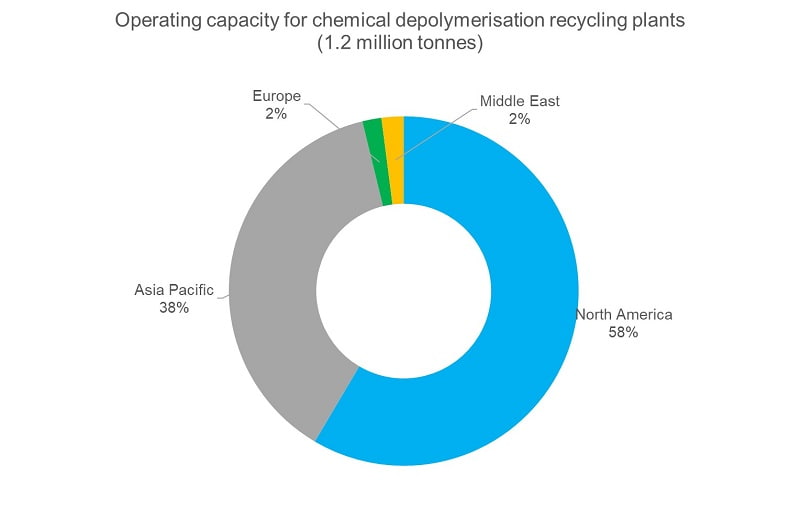
Pla.to Technology has just presented the first industrial technology solution for the bottle-to-bottle recycling of detergent bottles made of high-density polyethylene (HDPE). The clients for this project were Beiersdorf AG and the Fraunhofer Institute for Process Engineering and Packaging. Chemical-recycling – High-density-polyethylene
Used shampoo and shower gel bottles have been almost entirely reprocessed without any loss of quality in a water-saving process at the Pla.to technical facility in Görlitz. The rHDPE granulate obtained from bimodal high-density polyethylene was completely reintroduced into the production cycle, producing new detergent bottles solely from recycled granulate, that meet the quality standards of new products.
With this, Pla.to offers the technology for a closed HDPE cycle – without the addition of virgin granulate necessary in other processes. “Our solution is a sustainable and water-saving method to fully recycle HDPE in large quantities”, explains Pla.to Managing Director Heinz R. Schnettler.
Plastic for the Cosmetic Industry with High Stability
HDPE is very suitable for numerous applications due to its high stability and tensile strength. In the detergent industry, bottles are typically manufactured by extrusion blow molding and have a label attached. The cap is usually made of polypropylene (PP).
Efficient Recycling with Minimal Wastewater
In its in-house demonstration center, Pla.to has reprocessed the used bottles using its own equipment. Before recycling, they are first sorted by color with the caps and crushed using a granulator. A dry cleaner then removes residual ingredients inside the bottles without any wastewater. Stubborn contaminants are first soaked and then removed from the plastic using friction and hot water. The label adhesive is then removed and the material is mechanically and thermally dried. Finally, the air stream of the zig-zag separator separates the bottles and caps from labels particles according to their bulk density. In order to separate the HDPE from the other components for reuse at the end, the polypropylene is separated using near-infrared spectroscopy (NIR). After compounding, it is regranulated into rHDPE and can be directly reused to produce new bottles. Chemical-recycling – High-density-polyethylene
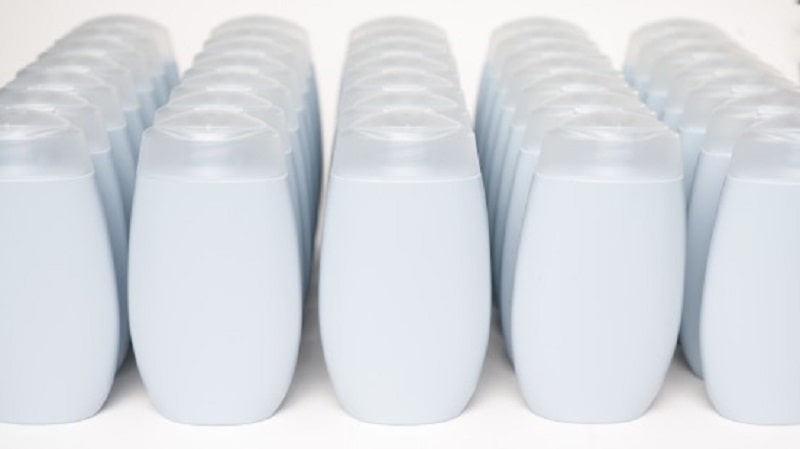
-New method to convert plastic trash into clean hydrogen fuel
Scientists from Nanyang Technological University, Singapore have developed a new method for plastic waste to be converted into hydrogen based on pyrolysis, a high temperature chemical processUnlike PET plastic bottles which can be recycled easily, plastic litter containing contaminated food packaging, styrofoam and plastic bags, is challenging to recycle. They are currently incinerated or buried in landfills, leading to both water and ground pollution. Using pyrolysis, plastic litter can then be converted into two main products, hydrogen and a form of solid carbon, called carbon nanotubes. Chemical-recycling – High-density-polyethylene
Hydrogen is useful for generating electricity and powering fuel cells like those found in electric vehicles, with clean water as its only by-product.
To further refine the new conversion method and to assess its commercial feasibility, the research team is test-bedding it on the NTU Smart Campus to treat local plastic waste, in partnership with Bluefield Renewable Energy, a local environmental firm that specialises in mobile waste to resources technologies.
The multimillion-dollar research joint project, supported by the Industry Alignment Fund-Industry Collaboration Projects (IAF-ICP) administered by Singapore’s Agency for Science, Technology and Research (A*STAR), aims to develop feasible solutions to economically scale up the conversion of waste plastics to hydrogen over the next three years. The project will also explore the potential of other emerging technologies for decentralised waste management. The conversion of challenging waste streams into energy and valuable resources, such as syngas, biochar, activated carbon and carbon nanotubes will be investigated. Chemical-recycling – High-density-polyethylene
With 832 million kilogrammes of unrecycled plastic waste generated in Singapore annually, the converted energy could potentially power up to 1,000 five-room apartments for a year. Led by Associate Professor Grzegorz Lisak from NTU’s Nanyang Environment and Water Research Institute (NEWRI), the research project used marine litter collected from local waters in collaboration with the Ocean Purpose Project, a non-governmental organisation and social enterprise based in Singapore.
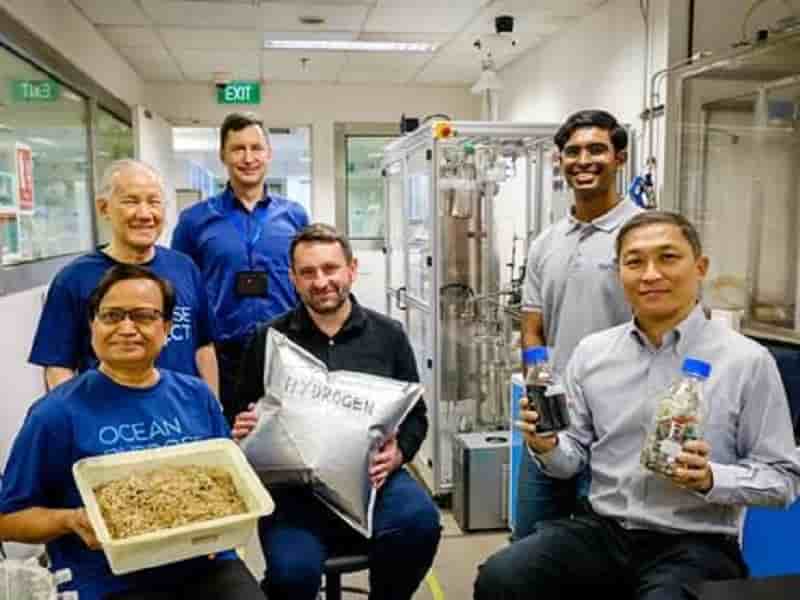
-BottleOne partners with SIPA: getting an integral handle on PET packaging
This could be the beginning of another new chapter in the story of PET packaging. BottleOne in Atlanta, GA, thinks technology that it has developed could lead to large HDPE bottles being replaced by higher performance versions in PET with fully integral handles. SIPA is helping it, with equipment to make the special preforms and to blow the beautiful bottles. SIPA is currently developing several new unit cavity preforms.
The development of the PET bottle with an integral PET handle – which is also called BottleOne – took nearly a decade. Chemical-recycling – High-density-polyethylene
It is protected by multiple patents. The initial patent has been approved in eight countries and is now pending in over 20 countries.
For decades, designers and packaging makers have been trying to figure out how to create a cost-effective, one-piece, PET bottle with a handle for mass production. After 55 years of HDPE gallon and half-gallon jugs, it’s here.
BottleOne PET bottles are made by first injection molding the special preforms which can be provided on the SIPA XFORM system, and then stretch-blowing the preforms on a SIPA SFL linear unit. Since the handles are an integral part of the preforms, no ancillary equipment is required to apply or attach the handle, although the technology incorporated into the preform heating ovens and the bottle molds is particularly sophisticated. The handle itself has a unique two-point attachment, which provides for extra strength and durability.
For bottle producers, fillers, and consumers, PET provides numerous advantages in terms of sustainability over HDPE. For example, machine output is far higher, at up to 5000 bottles per hour per cavity, so less equipment is needed. This helps bring down energy consumption by as much as 40%.
Size-for-size, a handled PET bottle is lighter than an HDPE one, even though HDPE is less dense, because PET is inherently mechanically superior and so wall thicknesses are much lower. Full PET bottles are much less likely to fracture when dropped, too. Obviously, PET bottles are much more attractive, since the material can be made crystal clear.
Independent top load strength tests have shown that BottleOne was far superior to HDPE bottles in a side-by-side evaluation of one gallon bottles. Virginia Tech has validated BottleOne to have a higher retention of riboflavin (flavor), vitamins, and dissolved oxygen (potential for longer primary shelf life).
“The extraordinary strength and durability of BottleOne containers can be leveraged to stack more, and higher,” says BottleOne. “One user went from four layers on a pallet to five layers on a pallet, and stacks of two pallets in the same space formerly used for one pallet of HDPE bottles.” Chemical-recycling – High-density-polyethylene
Extrusion blow molding with HDPE does make it easier to incorporate handles into larger bottles, but for many years now, SIPA has been providing numerous options to incorporate grips and handles into medium-sized and large PET containers. Now, with the technology developed by BottleOne, the options have increased, and the advantages of PET are even more striking.
BottleOne bottles are 100% PET, and so making them extra-easy to recycle without contaminating the waste stream. With the SIPA equipment and the use of latest recycling technologies, it is even possible to make the bottles out of 100% post-consumer recycled PET, rPET.
BottleOne provides a royalty free license for the technology to make PET bottles with integral handles. Preforms are supplied through the BottleOne system which utilizes SIPA technology: preform tooling (the company has the second-largest tool shop in the world) and highly energy-efficient XFORM Gen 4 preform production systems.
SIPA can supply licensees (as well as producers of other types of handled containers, obviously) with packaging design and development, and best-in-class SFL EVO linear stretch-blow molding systems that can produce bottles up to 5L in volume.
BottleOne production technology holds numerous cost-saving benefits for bottle makers. The overall process is simplified, for example, since there are no separate steps for producing and inserting separate handles. Using SIPA equipment for making preforms and bottles, processors gain all the advantages derived from a one-stop shop – not just the machines and molds, but also design, development and prototyping services.
PET bottles with integral PET handles present brand owners with new ergonomics and new opportunities. BottleOne bottles have been designed so that they are very easy to pour, for example. They look great, improving the marketability of the product. And they can be used for many types of liquid: milk is probably the most obvious one, especially in the USA, where until now HDPE has been virtually the only game in town. Then there are edible oils, all sorts of juices, and then in the non-food sector the long list of possibilities includes fabric softeners, detergents, all sorts of home care products, and many more. Chemical-recycling – High-density-polyethylene
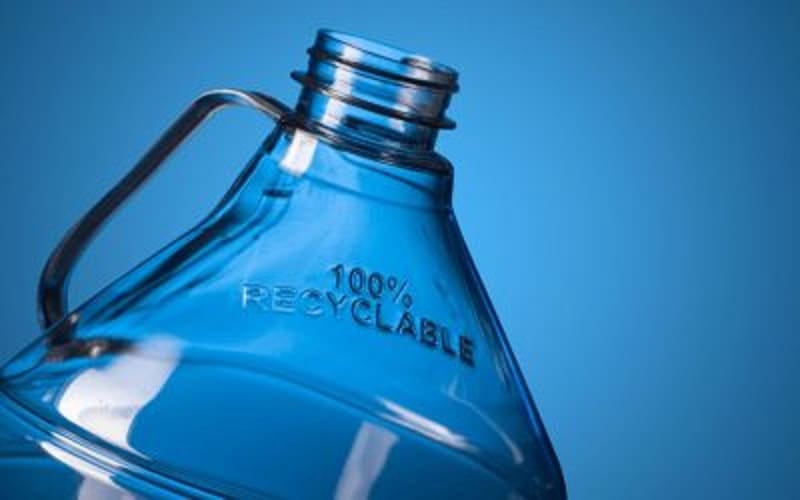
-Has Honeywell produced a fully recyclable blister pack?
Pharmaceutical packaging has achieved what performance materials and technologies producer Honeywell has described as ‘a new milestone’ due to technical recyclability recognition form US-based recycler TerraCycle.
TerraCycle has recognised Honeywell’s Aclar range of barrier film blisters as technically recyclable for PVC and PETG-based blisters.
Technical recyclability is the first step of a journey toward practical recyclability which may enable a second, downstream life for products that have traditionally been seen as difficult to recycle. Chemical-recycling – High-density-polyethylene
Aclar film forms part of Honeywell’s Life Sciences portfolio alongside the Aclar Edge bottles, which help protect medicines by providing the moisture barrier protection needed for drug stability and preserving the efficacy of medicines.TerraCycle works alongside brands, retailers and other stakeholders to help develop recycling solutions for waste streams that are not typically curbside recyclable. This recognition provides a methodology for multi-layer materials like pharmaceutical blister packaging to be recycled.
A common challenge faced by pharmaceutical manufacturers and consumers is that traditional recycling processes can only handle less complex, monolayer structures and materials. This leads to waste from multi-layer primary pharmaceutical barrier packaging materials being often sent to landfills or incinerated, unable to be recycled within existing municipal recycle streams.
As a result, pharmaceutical manufacturers have started an aggressive journey to improve their environmental footprint at the request of their customers. They are making strong commitments to carbon neutrality, PVC-free packaging and packaging material reduction.
The process developed to reclaim material from used multi-layer Aclar film blisters could reduce the environmental footprint of manufcturers with an opportunity to reduce waste and divert materials from landfill.
It is anticipated that the reclaimed material will be used downstream for non-pharmaceutical products as current regulations do not allow for recycled material to be used for primary drug packaging. Chemical-recycling – High-density-polyethylene
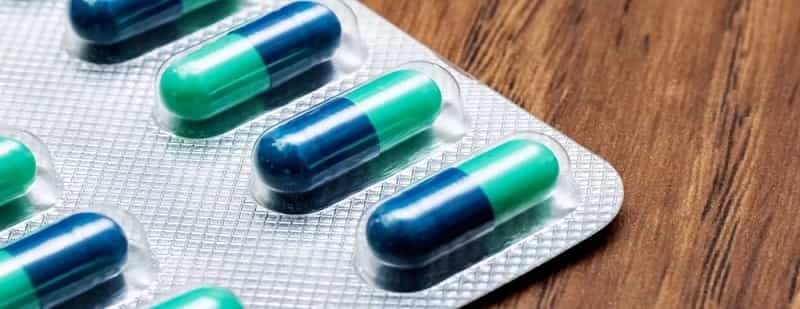
-US nonwovens output increases in 2021
The capacity of nonwovens in North America reached 5.540 million tonnes in 2021, an increase of 1.8% over the previous year, according to the latest INDA report.
The findings are part of INDA’s ninth edition of the annual North American Nonwovens Supply Report, which, containing a range of key metrics to assist in strategic planning and investments, also shows that North American imports, in tonnage, increased 1.6% in 2021 as exports decreased 6.0%.
Based on extensive research, producer surveys and interviews with industry leaders, the report provides an overall view of North American supply, including the key metrics of capacity, production and operating rates, in addition to regional trade, through the year 2021. Chemical-recycling – High-density-polyethylene
The 75-page report contains 36 figures and 11 tables.
“One of INDA’s key services is to provide valuable data and actionable industry information to enhance decision making in our capital-intensive industry. This report is the most complete and accurate portrayal for both rolled goods for sale and also material produced for internal consumption in North America. It also presents the industry operating rates in key areas. This is the essential metric on supply/demand balance essential for strategic planning and business investment decisions,” said Dave Rousse, INDA President.
The report—and the quarterly INDA Market Pulse and monthly Price Trends Summary—are provided to the nearly 400 INDA member companies and associates as part of their membership. The data gathered for this annual report serves as the foundation for the both the biannual Global Nonwoven Market Report published in September of 2021 and the biannual North American Nonwovens Industry Outlook, which will be updated and published this fall.
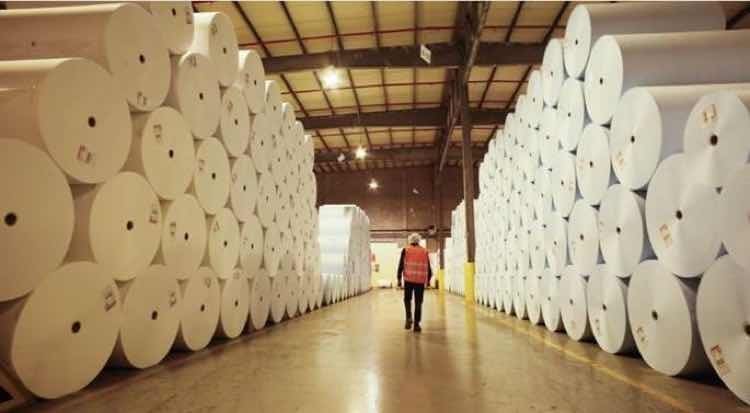
Chemical-recycling – High-density-polyethylene
